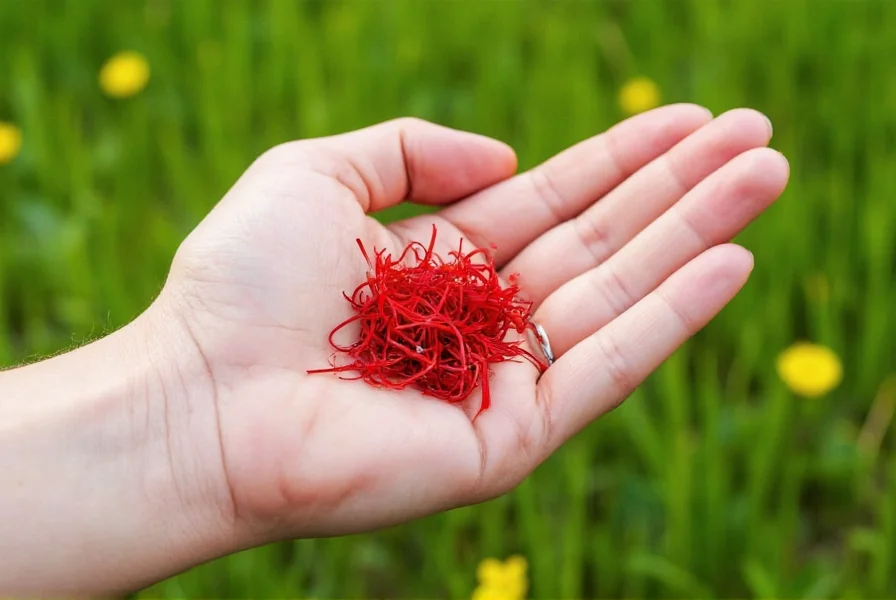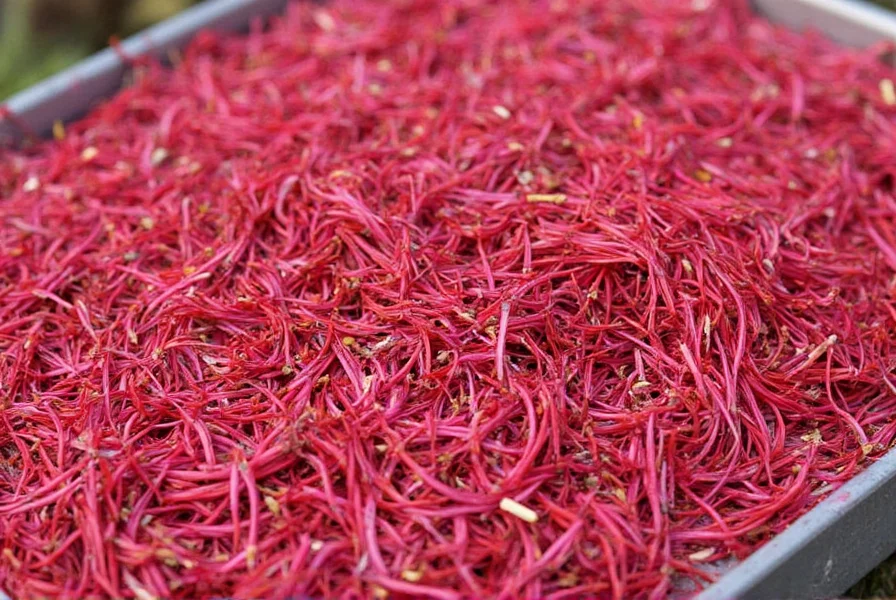The Complete Guide to Planting Saffron Crocus Successfully
Planting saffron may seem intimidating, but with proper technique, you can grow this valuable spice in your own garden. Saffron, derived from the delicate stigmas of Crocus sativus flowers, requires specific planting conditions to thrive. This comprehensive guide provides everything you need to know about planting saffron successfully, whether you're a beginner gardener or expanding your spice garden.
Understanding Saffron and Its Growing Requirements
Saffron cultivation begins with understanding the unique needs of Crocus sativus. Unlike many garden flowers, saffron crocus has very specific requirements that directly impact your harvest yield. These perennial bulbs originate from regions with hot, dry summers and cool, wet springs—conditions you'll need to replicate for successful growing saffron in home garden settings.
The most critical factor for saffron cultivation is proper drainage. Saffron bulbs will rot in waterlogged soil, making soil preparation essential before planting. The bulbs also require a period of dormancy during summer months, which mimics their natural growing cycle in Mediterranean climates.

Optimal Timing for Planting Saffron
The best time to plant saffron bulbs varies by climate zone but generally falls between late summer and early fall. In USDA hardiness zones 6-9, plant saffron corms in August or September to allow root development before flowering.
Planting too early in hot summer conditions can cause premature sprouting and bulb damage, while planting too late may not allow sufficient root development before flowering. The ideal planting window gives bulbs 6-8 weeks to establish roots before the flowering period begins in mid to late fall.
Soil Preparation Essentials
Proper soil preparation represents one of the most crucial steps in saffron cultivation. Follow these guidelines for optimal saffron cultivation requirements:
| Soil Parameter | Optimal Range | Adjustment Tips |
|---|---|---|
| pH Level | 6.0-8.0 | Add lime to raise pH; sulfur to lower pH |
| Drainage | Excellent | Mix in 30-50% sand or perlite to heavy soils |
| Organic Matter | Moderate | Add 1-2 inches compost before planting |
| Soil Temperature | 60-70°F (15-21°C) | Plant when soil cools after summer heat |
Avoid planting saffron in areas where water tends to pool after rain. Raised beds work exceptionally well for saffron planting spacing guidelines in regions with heavier rainfall.
Step-by-Step Planting Instructions
Follow these precise steps for proper saffron crocus planting depth and placement:
- Prepare the soil by loosening to a depth of 12 inches and incorporating organic matter
- Select healthy, firm bulbs approximately 1-2 inches in diameter
- Dig holes 3-4 inches deep—the how deep to plant saffron bulbs measurement is critical
- Space bulbs 4-6 inches apart in all directions
- Place bulbs with the pointed end facing upward
- Cover with soil and gently firm the surface
- Water thoroughly after planting, then allow soil to dry between subsequent waterings
For container growing, use pots at least 8 inches deep with multiple drainage holes. Container planting offers better control over soil conditions, making it ideal for gardeners in regions with less-than-ideal climates for saffron cultivation.
Post-Planting Care Requirements
After planting saffron bulbs, proper care ensures healthy growth and maximum yield:
- Watering: Water sparingly after planting—only when the top 2 inches of soil feel dry. Overwatering causes bulb rot.
- Fertilizing: Apply balanced fertilizer (5-10-10) at planting time and again when foliage appears
- Weed control: Hand-pull weeds carefully to avoid disturbing shallow roots
- Winter protection: In colder zones (below 6), apply 2-3 inches of mulch after ground cools
During summer dormancy, keep the soil completely dry. This dry period is essential for triggering flowering in the fall. Many beginners make the mistake of watering during dormancy, which significantly reduces flowering.
Avoiding Common Planting Mistakes
Even experienced gardeners encounter challenges with saffron planting. These common errors can significantly impact your harvest:
- Planting too shallow: Bulbs planted less than 3 inches deep may dry out or produce weak flowers
- Overcrowding: Spacing bulbs closer than 4 inches reduces air circulation and increases disease risk
- Ignoring soil drainage: Poor drainage causes up to 90% of saffron planting failures
- Watering during dormancy: Summer watering prevents proper bulb development for fall flowering
- Using poor quality bulbs: Small or damaged bulbs produce fewer flowers and lower quality saffron
Expected Growth Timeline
Understanding the saffron growth cycle helps manage expectations for your crocus sativus planting instructions investment:
- Weeks 1-4: Root development occurs underground with no visible growth
- Weeks 5-8: Narrow green shoots emerge above soil surface
- Weeks 9-12: Purple flowers begin to appear, typically in October or November
- Flowering period: Lasts 3-6 weeks with flowers opening in the morning
- Spring: Foliage continues growing until early summer
- Summer: Complete dormancy period—no growth, minimal water
Most saffron plants reach full production in their second or third year. In the first year, expect approximately 1-3 flowers per bulb. Mature plants (years 2-5) typically produce 5-10 flowers per bulb.
Harvesting Your Saffron
When learning how to plant saffron, remember that harvesting requires precision timing. Pick flowers in the morning when they're fully open but before the heat of the day causes them to close. Carefully remove the entire flower and immediately extract the three red stigmas.
Dry the stigmas away from direct sunlight, either by air drying or using a dehydrator at low temperature (less than 100°F/38°C). Properly dried saffron should be brittle and deep red. Store in an airtight container away from light for up to two years.
How many saffron threads can I expect from one bulb?
Each saffron flower produces three stigmas (threads). In the first year, a healthy bulb typically yields 1-3 flowers, while mature bulbs (years 2-5) produce 5-10 flowers. This means a single mature bulb can yield 15-30 saffron threads per season.
Can I plant saffron in containers?
Yes, saffron grows well in containers with proper drainage. Use pots at least 8 inches deep with multiple drainage holes. Container growing allows better control of soil conditions and is ideal for gardeners in regions with heavy rainfall or extreme temperatures. Remember to bring containers to a dry, cool location during summer dormancy.
How long does it take for saffron to grow after planting?
After planting in late summer, saffron bulbs develop roots for 4-8 weeks before sending up shoots. Flowers typically appear 6-10 weeks after planting, usually in mid to late fall. The complete growth cycle from planting to harvest takes approximately 2-3 months.
Why aren't my saffron bulbs flowering?
Common reasons for lack of flowering include: planting too shallow, poor drainage causing bulb rot, insufficient summer dormancy (watering during dormancy), overcrowding, or using low-quality bulbs. Saffron requires a dry summer dormancy period to trigger fall flowering—this is the most common mistake made by beginners.
How often should I replace saffron bulbs?
Saffron bulbs multiply naturally but become overcrowded after 3-5 years, reducing flower production. For maximum yield, divide and replant bulbs every 3-4 years during their summer dormancy period. This rejuvenates the planting and maintains optimal production levels.











 浙公网安备
33010002000092号
浙公网安备
33010002000092号 浙B2-20120091-4
浙B2-20120091-4